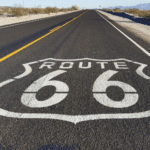Of the summertime activities available through the USA, one of the most adrenaline-filled must be whitewater rafting. From gentle rapids to the most raging, there are plenty of rivers throughout the country to find your edge – here are a few from which to choose.
The Northeast
Perhaps better known for its skiing, it only makes sense that when the snow melts, it creates some terrific whitewater rafting in Vermont. The West River that runs through Jamaica State Park is controlled by the Army Corp of Engineers, who will create intermediate-level class II, III and IV whitewater by opening the Ball Mountain dam in September for the ride of a lifetime.
In New York’s Thousand Islands region, whitewater rafting on the Black River is some of the best that can be found. The river water shoots through a narrow canyon and across boulders and ledges, making for terrific whitewater during the spring, and a calmer experience during the summer. The Cattaraugus River is another terrific option, running through the Zoar Valley enveloped by rugged cliffs hundreds of feet high and waterfalls; keep an eye out for nesting bald eagles!
The South
Protected since 1974, the Chattooga River near Clayton, Ga., doesn’t only provide breathtaking scenery, but fantastic rivers through which to navigate. Families can easily traverse the class II-III rapids and take breaks in the swimming holes, while more adventurous paddles will thrill in the class IV rapids and even seven-foot falls.
With five miles of continuous class III and IV rapids, it’s no wonder the Ocoee River about an hour outside Chattanooga, Tenn., was chosen to host the 1996 Olympic whitewater events. Like the West River, the Ocoee is dam-controlled and managed by the Tennessee Valley Authority, Tennessee Department of Environment and Conservation, United States Forest Service and the Ocoee River Outfitters Association. The Upper Ocoee, where the Olympic events were held, runs 34 days a year, while the Middle Ocoee and its five-mile run is open 116 days a year.
Two rivers in Southwestern West Virginia are known around the world for their stellar whitewater: the New River, considered “the Grand Canyon of the East” and the Gauley River, each of which has two sections to paddle. The Upper New River is perfect for small children who can ride the small rolling rapids in an inflatable kayak, while the Lower New River offers a bit more daring fun, but still great for families. On the other hand, the Upper Gauley River is known to be one of the top whitewater runs in the world and is available in the fall. That’s not to say that the Lower Gauley River doesn’t hold its own – not only are its rapids world-class, but the remote scenery is simply stunning.
The West
Idaho’s Loscha River (pronounced lock-saw) provides rafters with the variety they’re seeking: fast, big whitewater that creates huge waves, big hydraulics and loads of excitement, while surrounded by gorgeous mountain scenery. Perfect!
Not surprising, Colorado is very well known for its whitewater rafting rivers. Three to keep in mind include the Cache la Poudre River, the state’s first and only federally designated “Wild and Scenic River.” The river’s class II, III and IV rapids are in close proximity to Fort Collins and Rocky Mountain National Park, making accessibility easy as well. Also near Fort Collins, the North Platte River’s class II through class IV rapids are found in the secluded area of the Northgate Wilderness Area making for a memorable rafting experience. Elsewhere, the Arkansas River drops 5,000 feet within its first 125 miles, resulting in more stretches of whitewater than any other river in Colorado – more than 60 miles – and making it one of the country’s most popular rafting rivers ranging from class II to class IV rapids.
California has a number of whitewater rafting rivers that range from beginner to intermediate and even advanced. All levels can be found on the American River, which is comprised of three sections: North, Middle and South Forks. Starting with beginners, the South Fork features class III rapids suitable for all paddlers and is the state’s most popular whitewater river. Intermediate paddlers will enjoy the Middle Fork, which is also idea for adventurous first-timers. The water in the Middle Fork is crystal-clear and the run’s made even more fun by going through the Tunnel Chute rapid which flows through a 90-foot tunnel blasted by 19th-century miners. Finally, the North Fork is perfect for advanced paddlers looking for challenging and technical rafting. Elsewhere in California, the Merced River runs through the Yosemite Valley with rapids ranging from class III to class IV, depending on the time of year.
Whitewater rafting in Alaska? Of course! The Kenai Peninsula, just south of Anchorage, offers two options: a three-hour leisurely float during which rafters may spot eagles, moose, Dall sheep and bears. More enthused rafters will opt for the seven-hour adventure through the Kenai Canyon, with class II and III rapids and some of the most beautiful scenery along the Kenai River. Less than 10 miles from Hope, Ala., (about 70 miles from Anchorage) is Six Mile Creek, with challenging class IV and V rapids nicknamed “Jaws,” “Staircase,” “Suckhole” and “Merry-Go-Round.” The run flows through the Chugach Mountains and drops 50 feet per mile.


